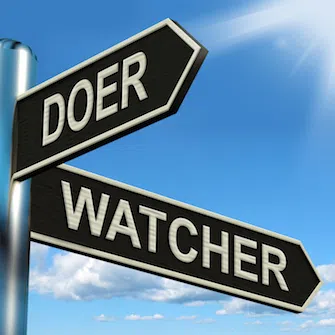When we looked at these statistics, we saw a challenge that has existed for many years in our industry — one we were told was “just part of the business.” How can we meaningfully impact the existing inefficiencies and consequently improve our business results? Many practices in construction have been around for a very long time, and processes are often difficult to change quickly and in a meaningful way.
In 2003, we decided to launch a major effort to become more efficient in all of our operations — office and field — and to eliminate waste from our processes. At that time, we had been reading about Lean Manufacturing, as popularized largely by the likes of Toyota and Honda in the automobile industry. At the heart of the lean initiative is:
• Employee engagement and involvement
• Process improvement and standardization
• A keen focus on sustaining the improvements made
The results include a highly motivated and engaged workforce, much improved processes with greatly reduced waste and the ability to lower cost and raise quality —an ability that many previously believed was a trade-off, not something that could be achieved at the same time. We committed ourselves to apply lean principles and techniques to our business.
Creating A Lean Culture
The Grunau Co. Lean Initiative was championed and led by Ted Angelo, our executive vice president, who has subsequently become a Lean Sensei International. Initially, we struggled with rationalizing Lean, as it had previously been a manufacturing initiative, with limited presence in construction. Manufacturing, with its fixed sites and repeated processes, seemed like a better fit than construction, with its multiple sites and processes that vary by customer and job. We encountered an additional challenge in the “it’s always been done this way” mentality, as well as the widely held belief that Lean meant job and workforce reductions.
First and foremost, we wanted to make sure everyone knew that our Lean Initiative was about eliminating waste, increasing efficiency, and providing our customers with a higher level of predictability and quality, which ultimately would lead to our company winning more business, building more long-term relationships, and actually increasing employment.
We utilized an outside consultant to run a series of orientation and training sessions that all employees attended. We needed everyone to know what we planned, why it was good for them, and what to expect. In my experience, you are better off being open and transparent up front, eliminating the tendency that most people have to interpret change as negative.
Once we completed orientation, we planned our first Lean Event in a very visible area of the company, and an area where we knew we could make substantial improvements — the tool and equipment area. Our Lean Team consisted of a cross-sectional group of about 10 employees from all areas, including office and field, who worked for four days reorganizing the physical work area and our existing processes. At the end of four days, the group then presented their work to our executive team. This is an important “closing” step because it allows the team to present and even “show off ” its work. The presentation also shows the level of importance that our Lean Initiative holds in the company.
Leveraging Lean Results
That first event was a watershed for us, because others saw our excellent results and saw that no jobs were eliminated as a result. Soon, people from all parts of the company were asking when a Lean Event could be conducted in their area, or when they could be on a team that conducted a Lean Event.
Since that initial event, we have gone into virtually every part of our company and applied Lean Principles. Our areas of improvement have included:
• Fabrication operations
• Purchasing and accounting processes
• Receivables and payables groups
• Many activities on jobsites, including tools and equipment
• Standard installation processes
• Vehicle set-up
We will never finish the process of improving our business. However, we have made some significant progress. Anecdotally, we can see evidence of this throughout our business: employee engagement is high, because people’s ideas are listened to and acted on, especially in the Lean Events. People realize that Lean is not about eliminating people; it is about eliminating waste so people can be more productive and we can be more successful as a company. Quantitatively, our labor outcomes in the field have improved, and we have grown our business substantially because, through increased efficiency, our infrastructure is able to support more.
We hold regular company-wide meetings to communicate what we are doing and how we are doing. At these meetings, we discuss our results and recognize recent Lean Teams, Lean Events, and good ideas. This is our chance to celebrate collectively what we are trying to accomplish.
We are still working hard and have lots more to do.
One word of caution — Lean requires a substantial investment, and you must go into a Lean Initiative with the understanding that you will need to invest to get the return from Lean. Whether it is tools and equipment to increase efficiency, people’s time to participate in Lean Events (when they won’t be doing their “regular” job), or outside consulting help, Lean is an investment, just like other investments you make in your business. It requires your commitment as the company leader, as well as an internal champion to oversee the implementation. It has been a great thing for our company and our team.
Paul Grunau - The Grunau Co. is a full-service mechanical systems company with more than 500 employees. The company provides expertise on design, construction, installation, and service and maintenance for the commercial, industrial and institutional markets.


